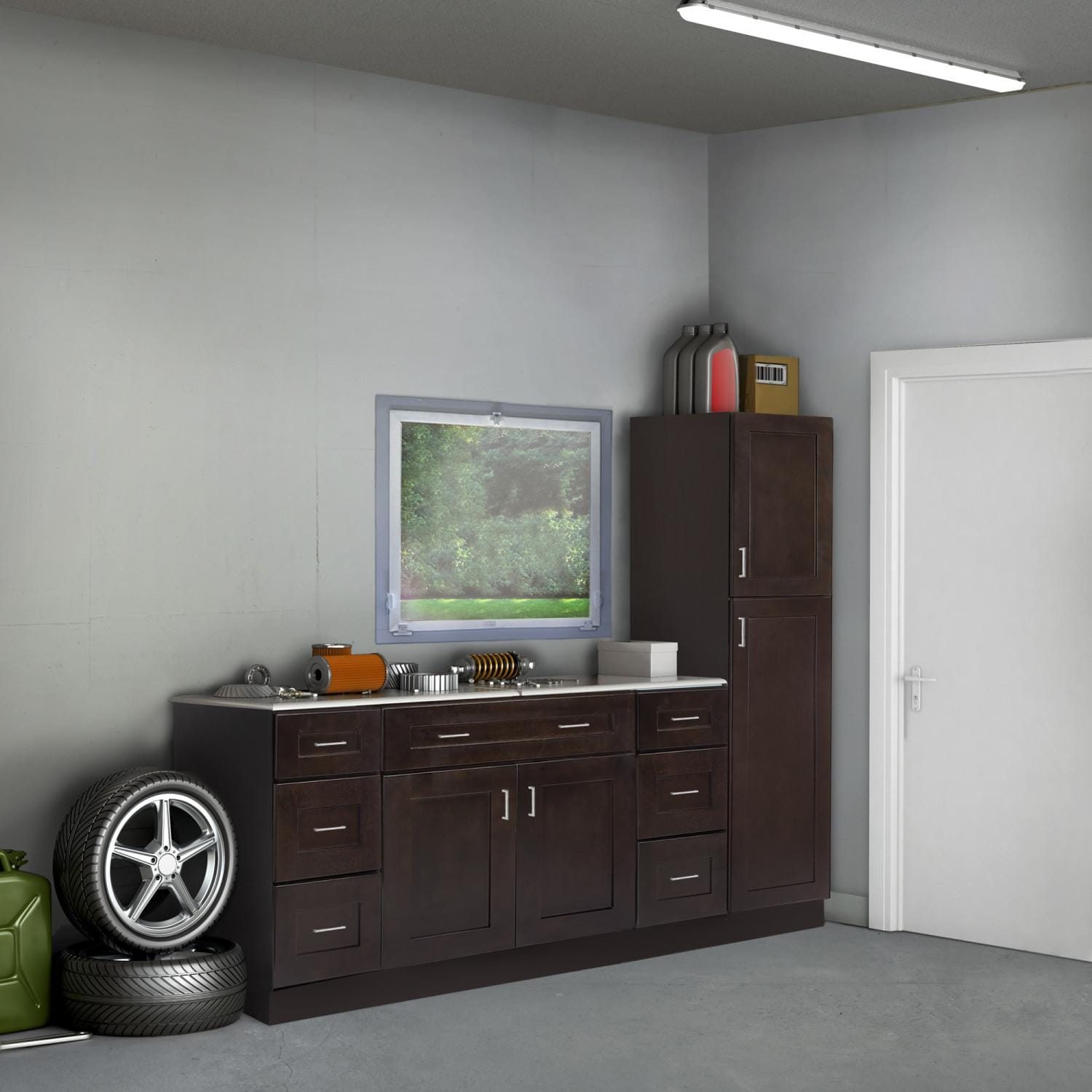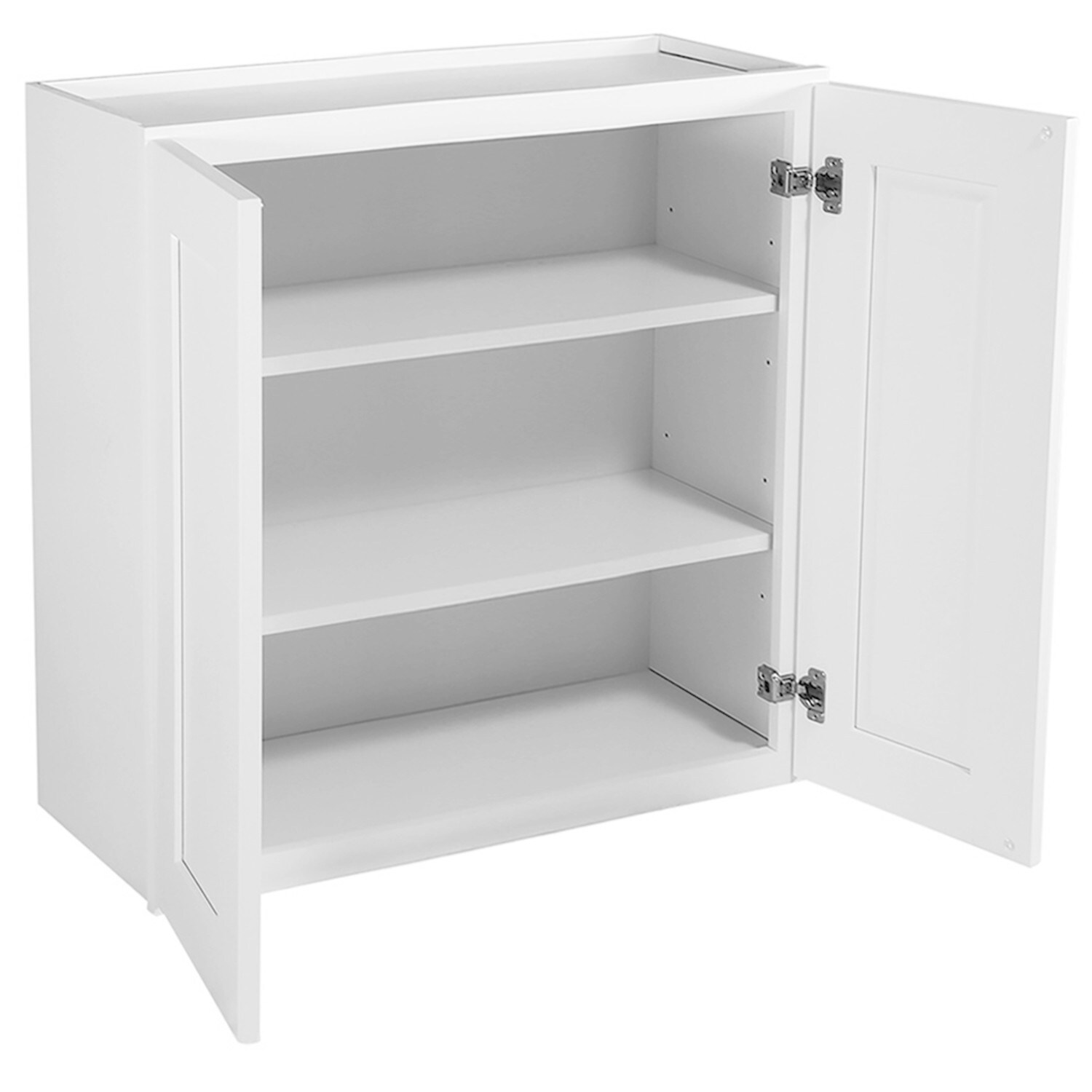Understanding 24 x 30 x 12 Wall Cabinets

The dimensions “24 x 30 x 12” refer to the width, height, and depth of a wall cabinet, respectively, measured in inches. A 24 x 30 x 12 wall cabinet is a versatile storage solution, offering ample space for various items while maintaining a compact footprint.
Features and Functionalities
A 24 x 30 x 12 wall cabinet typically features a door or doors that provide access to the interior storage space. The doors can be hinged, sliding, or even bi-fold, depending on the design and functionality. Some cabinets might also include shelves or drawers to further organize the contents. The cabinet can be mounted to the wall using brackets or other mounting hardware, providing a secure and space-saving solution.
Uses and Applications
24 x 30 x 12 wall cabinets are commonly used in various settings:
Homes
– Kitchen: Store dishes, cookware, and other kitchen essentials.
– Bathroom: Organize toiletries, towels, and cleaning supplies.
– Living Room: Display decorative items, books, or electronics.
– Bedroom: Store clothes, accessories, and personal belongings.
– Home Office: Organize files, stationery, and other office supplies.
Offices
– Storage for files, documents, and office supplies.
– Displaying awards, certificates, or company branding.
Commercial Spaces
– Retail stores: Display products and merchandise.
– Restaurants: Store cutlery, linens, and other supplies.
– Hotels: Provide additional storage space in guest rooms.
Benefits and Drawbacks
Benefits
– Space-saving: Wall cabinets utilize vertical space, freeing up floor area.
– Versatility: Suitable for various uses and settings.
– Accessibility: Easy to access stored items.
– Customization: Available in different materials, finishes, and configurations.
Drawbacks
– Limited Depth: A 12-inch depth might not be sufficient for bulky items.
– Installation Complexity: Mounting a wall cabinet requires proper tools and techniques.
– Weight Limitations: The cabinet’s weight capacity might be limited depending on the construction materials and mounting method.
Design and Construction Considerations: 24 X 30 X 12 Wall Cabinet

When designing and constructing a 24 x 30 x 12 wall cabinet, several factors come into play, including the choice of materials, design elements, and overall functionality.
Materials Used in Construction
The material used for a 24 x 30 x 12 wall cabinet significantly impacts its durability, aesthetics, and cost. Here are some common materials and their respective advantages and disadvantages:
- Medium-density fiberboard (MDF): MDF is a popular choice for cabinet construction due to its affordability, smooth surface, and ability to be easily shaped. It’s also readily available in various thicknesses and finishes. However, MDF is not as strong as wood and can be susceptible to moisture damage.
- Plywood: Plywood offers greater strength and stability compared to MDF. It’s also more resistant to moisture and warping. Plywood comes in various grades, with higher grades offering better quality and durability. However, plywood can be more expensive than MDF.
- Solid wood: Solid wood provides the highest level of durability and natural beauty. It’s a premium choice for cabinets, offering a timeless appeal and a sense of craftsmanship. However, solid wood is the most expensive option and requires careful maintenance to prevent warping and cracking.
- Particleboard: Particleboard is the least expensive option, but it’s also the least durable. It’s prone to moisture damage and can easily chip or dent. However, it’s often used as a core material for cabinet doors and drawer fronts, with a veneer or laminate applied for a more appealing finish.
Design Elements
The design elements of a 24 x 30 x 12 wall cabinet contribute significantly to its overall appearance and functionality. Here are some key design considerations:
Door Styles
- Slab doors: These are simple, flat doors with no raised panels or molding. They offer a modern and minimalist look.
- Raised panel doors: These doors feature a raised panel in the center, creating a classic and traditional look.
- Shaker doors: These doors have a simple, rectangular frame with a flat center panel, offering a clean and timeless design.
- Glass doors: Glass doors provide a contemporary and elegant look, allowing you to showcase items inside the cabinet. They can be frosted, clear, or patterned to suit your style.
Finishes
- Paint: Paint offers a wide range of colors and finishes, from matte to gloss. It’s a versatile option for achieving a desired look.
- Stain: Stain enhances the natural beauty of wood by bringing out its grain patterns and color variations. It provides a warm and inviting look.
- Laminate: Laminate is a durable and affordable finish that comes in a wide variety of colors, patterns, and textures. It’s resistant to scratches, stains, and moisture.
- Veneer: Veneer is a thin layer of wood that is applied to a core material, such as MDF or plywood. It provides the look of solid wood at a lower cost.
Hardware
- Handles: Handles are essential for opening and closing cabinet doors and drawers. They come in various styles, materials, and finishes, allowing you to personalize your cabinet.
- Knobs: Knobs are another common hardware option for cabinets. They offer a simple and classic look and are available in various sizes and styles.
- Hinges: Hinges are used to attach cabinet doors to the cabinet frame. They come in various types, including concealed hinges that provide a sleek and modern look.
Visual Representation
Imagine a 24 x 30 x 12 wall cabinet with a unique and aesthetically pleasing design. The cabinet is constructed from solid maple wood, stained with a rich mahogany finish. It features two shaker-style doors with brushed nickel handles. The doors are framed with a decorative molding that adds a touch of elegance. The interior is painted a soft white, creating a bright and airy feel. The cabinet includes adjustable shelves to accommodate items of various sizes.
Installation and Maintenance

Installing a 24 x 30 x 12 wall cabinet is a straightforward process that can be completed with basic tools and some careful planning. Proper installation ensures the cabinet is secure and stable, preventing accidents and maximizing its lifespan. This section will cover the steps involved in installing a 24 x 30 x 12 wall cabinet, along with essential safety precautions and maintenance practices to keep your cabinet in optimal condition.
Installation Steps
Before beginning installation, ensure you have all necessary tools and materials, including a stud finder, level, drill, screws, anchors (if necessary), tape measure, pencil, and safety glasses. It’s also essential to understand the weight capacity of the cabinet and choose appropriate mounting hardware.
- Locate Studs: Use a stud finder to locate the wall studs where you intend to mount the cabinet. Ensure the studs are strong enough to support the weight of the cabinet and its contents.
- Mark Mounting Points: Using a tape measure and pencil, mark the exact locations on the wall where the cabinet will be mounted. Ensure the markings are level and aligned with the cabinet’s back panel.
- Pre-Drill Holes: If necessary, pre-drill pilot holes at the marked locations on the wall. This helps prevent the wood from splitting when screwing in the mounting hardware.
- Attach Mounting Hardware: Secure the cabinet to the wall using screws or anchors, depending on the wall material and cabinet weight. Make sure the screws are long enough to reach into the studs for maximum stability.
- Level the Cabinet: Use a level to ensure the cabinet is perfectly level before tightening the mounting hardware. This prevents the cabinet from tilting or becoming unstable over time.
Securing the Cabinet
Securing the cabinet to the wall is crucial for its stability and safety. There are several methods for securing a 24 x 30 x 12 wall cabinet, depending on the wall material and the cabinet’s weight.
- Screws into Studs: The most reliable method is to screw the cabinet directly into wall studs. This provides the strongest and most secure attachment.
- Anchors: If mounting into drywall or plaster, use anchors designed for the specific wall material and cabinet weight. These anchors expand inside the wall, providing a secure hold for the screws.
- Cabinet Brackets: For heavier cabinets or if mounting into a wall that cannot support screws, consider using specialized cabinet brackets. These brackets attach to the wall and the cabinet, offering extra support and stability.
Maintenance Practices, 24 x 30 x 12 wall cabinet
Regular maintenance is essential to prolong the life of your 24 x 30 x 12 wall cabinet. Here are some common maintenance practices:
- Cleaning: Dust and wipe down the cabinet regularly with a damp cloth. Avoid harsh chemicals or abrasive cleaners that can damage the finish.
- Hardware Inspection: Periodically check the cabinet’s hinges, handles, and other hardware for wear or damage. Replace any worn or broken parts promptly to ensure smooth operation and prevent accidents.
- Shelf Support: Inspect the shelf supports for any signs of sagging or instability. If needed, tighten loose screws or replace damaged supports.
- Weight Distribution: Avoid overloading the cabinet with heavy items. Distribute weight evenly across the shelves to prevent sagging or damage to the cabinet’s structure.
Troubleshooting Common Problems
Here are some common problems you might encounter with a 24 x 30 x 12 wall cabinet and their possible solutions:
- Cabinet Tilting: If the cabinet is tilting, check the mounting hardware and ensure it is securely fastened to the wall. If necessary, tighten loose screws or replace damaged anchors.
- Doors Not Closing Properly: If the doors are not closing properly, check the hinges for wear or damage. If the hinges are loose, tighten the screws. If they are damaged, replace them with new ones.
- Shelves Sagging: If the shelves are sagging, check the shelf supports for any signs of damage or looseness. Tighten loose screws or replace damaged supports.
- Cabinet Making Noise: If the cabinet is making noise, check the mounting hardware for any loose screws or connections. Also, check the hinges and other hardware for wear or damage.
A 24 x 30 x 12 wall cabinet offers ample storage space, especially when paired with a sleek countertop. The contrast of a warm, natural oak cabinet against a cool, sophisticated gray quartz countertop is a timeless combination that adds visual interest and elevates the overall aesthetic.
With the right cabinet size and countertop choice, you can create a kitchen that is both functional and visually stunning.
A 24 x 30 x 12 wall cabinet can be a great addition to any kitchen, offering extra storage space without taking up too much floor area. However, if you’re planning on replacing your existing cabinets, you might be wondering how to remove them without also removing the countertop.
Fortunately, there are techniques you can use to achieve this, as explained in detail at how to remove kitchen cabinets without removing countertop. Once you’ve successfully removed the old cabinets, you’ll be ready to install your new 24 x 30 x 12 wall cabinet and enjoy the extra storage space it provides.